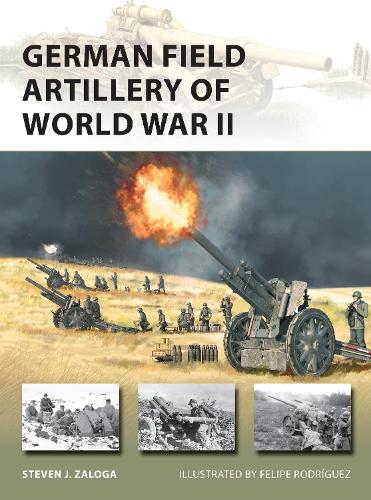German Field Artillery of World War II
Usually shipped within 24 hours
UK deliveries from £5.95
Delivery & Returns
Delivery & Returns
We use the Royal Mail, DHL Express or UPS for our customers. For UK addresses, deliveries under 10kg are a standard £4.95 via Royal Mail Tracked 48 Service. For orders over 10kg and overseas customers, postage is calculated for you at checkout once you have entered your postal address. This price, does not include any potential custom charges that may apply, depending on the product or destination, as every country has very different import duties / taxes. Online exclusive products (such as trainers) will be delivered to you directly from the printer, separate from other items in your order, but your postage fee covers ALL items in your order.
If you are unhappy with your purchase, please email shop@tankmuseum.org within fourteen (14) working days of receiving your goods, and return it to us at the address below, in its original condition, unopened (with any seals and shrink-wrap intact) and we will issue you a full refund or replace it. Goods must be returned at your own cost. If the item is faulty, you do not need to return it, we will send you a replacement free of charge.
Description
Description
An illustrated study of the big guns of Hitler's army – the Wehrmacht's field artillery, its capabilities and its role in German fighting units of World War II.
Often overshadowed in military history by the tanks and aircraft of Blitzkrieg, Germany’s artillery was key to its methods of waging war throughout World War II. Field artillery remained the primary killer on the battlefield, often responsible for three-quarters of combat casualties inflicted.
Redressing the balance, this book surveys the major Wehrmacht guns of the war, and the basic organizational structure of the German field artillery. Its primary focus is on the divisional field guns, especially the lFH 18 10.5cm field howitzer and the 15cm sFH 18 field howitzer that formed the backbone of German artillery. A brief survey is also made of the infantry guns used at the regimental level, and of corps-level heavy artillery. The issue of the use of"Beutewaffen,” captured war-booty field guns, is also looked at, as is the Nebelwerfer and schwere Wurfgerät rocket artillery.
With archive photos and meticulously detailed new illustrations, this book provides a concise study of the German Army’s big guns of World War II, how they were organized and how they were used, both on the Eastern and Western fronts.
![German Field Artillery of World War II Book [variant_option4]](http://tankmuseumshop.org/cdn/shop/files/9781472853974.jpg?v=1748335999&width=1214)

![German Field Artillery of World War II Book [variant_option4]](http://tankmuseumshop.org/cdn/shop/files/9781472853974.jpg?v=1748335999&width=88)
![Christmas Tank Museum Wrapping Paper - Two sheet pack Wrapping Paper [variant_option4]](http://tankmuseumshop.org/cdn/shop/files/DSC2318.jpg?v=1759225755&width=176)
![German Field Artillery of World War II Book [variant_option4]](http://tankmuseumshop.org/cdn/shop/files/9781472853974.jpg?v=1748335999&width=640)



